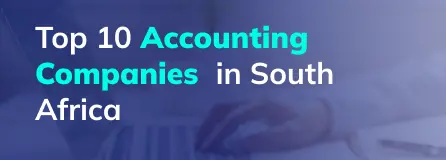
Effective manpower optimization is the strategic management of organizational human resources to maximize productivity, efficiency, and overall performance. By strategically managing this, businesses align workforce capabilities with business objectives, minimize costs, and enhance overall competitiveness. Manpower management also helps businesses ensure that the right talent is in the right place at the right time. This is achieved through strategic recruiting, training, and retaining skilled employees who possess the necessary knowledge, skills, and experience to fulfill key organizational roles.
In many cases, organizations fail to factor in aspects like seasonality, market dynamics, and unforeseen events to accurately predict workload requirements. This inability leads to overstaffing during periods of low demand, resulting in unnecessary labor costs or understaffing during peak periods. Ultimately, all these downturns compromise service quality and customer satisfaction. Likewise, as industries evolve and technologies advance, organizations fail to identify and acquire the right talent with updated skills and expertise. Things have far-reaching impacts on an organization's competitiveness, innovation capabilities, and long-term growth prospects.
This blog aims to discuss how to optimize manpower in the organization by providing key strategies.
Optimizing manpower in an organization is crucial for several reasons, as it directly impacts efficiency, productivity, and overall business success. Here are the key reasons why it is important:
Here are six best strategies to optimize manpower in organizations:
This is a comprehensive approach that aims at aligning an organization's human capital with its strategic objectives. It involves analyzing the current composition of the workforce in terms of skills, competencies, and demographics. The approach also involves forecasting future talent needs based on anticipated business growth, technological advancements, and market trends.
By understanding the gap between the existing workforce and future requirements, organizations can develop targeted strategies to optimize manpower resources. This may involve initiatives such as talent acquisition to fill skill gaps, succession planning to ensure leadership continuity, and talent development programs to upskill or reskill existing employees. Additionally, strategic workforce planning facilitates proactive talent management, enabling organizations to anticipate and address potential staffing challenges before they become critical issues.

Employee development and training initiatives provide continuous learning, skill enhancement, and career development opportunities. This ensures that employees are equipped to meet the changing demands of their roles and contribute effectively to organizational success. By investing in employee development, businesses foster a culture of growth and learning and improve workforce productivity, performance, and job satisfaction.
Employee development programs foster employee engagement and retention by showcasing a commitment to their professional growth and advancement. By empowering employees through development and training opportunities, organizations can optimize manpower resources and ultimately drive organizational success. According to a report by the Association for Talent Development (ATD) , organizations that provide detailed training programs have 218% higher income per employee than those with less formalized training.
Performance management processes including regular performance reviews, goal setting, and feedback sessions, help assess employee performance against predefined targets and provide constructive feedback on areas of strength and improvement. This creates a feedback loop, enabling employees to identify their areas of improvement, understand their performance needs, and receive guidance on how to enhance their skills and capabilities. Rewards and recognition are proven ways to motivate employees to excel in their roles even before receiving feedback. Rewarding employees justly boosts their morale and increases engagement. This results in improved job satisfaction and employee retention.
Performance management helps identify high performers who can be groomed for leadership roles or offered opportunities for career advancement. This ensures that the organization has the right talent in the right positions to drive success. Additionally, by addressing performance issues promptly and offering targeted development interventions, businesses can create a more efficient and effective workforce and drive exceptional organizational performance.
.webp)
Flexibility in manpower management is the ability to adapt the workforce to changing business needs. Agility is about responding quickly and effectively to dynamic market conditions. Organizations must embrace these concepts in their business strategies and operations to enhance workforce productivity, improve resource allocation, and maintain competitiveness in a dynamic economic environment. Organizations can exercise flexibility by providing arrangements like telecommuting, part-time schedules, job sharing and more. It enables employees to balance work and personal commitments, resulting in higher job satisfaction and retention. Likewise, cross-training and multi-skilling initiatives allow employees to perform multiple roles. Such capabilities reinforce workforce agility to handle diverse tasks as and when needed.
Agile organizations empower employees to make decisions autonomously, allowing faster response times to customer needs and market shifts. By cultivating a culture of flexibility and agility, organizations can optimize manpower resources, improve operational efficiency, and attain sustainable growth in today's dynamic business landscape. According to a McKinsey survey, 82% of executives think that agility is the key to business success.
Effectively-engaged employees are highly committed to their work. They feel connected to the organization's mission and values, and are motivated to contribute their best efforts. Therefore, businesses should create a positive work environment by fostering a culture of employee engagement through initiatives such as regular communication and recognition programs. This helps employees feel valued, supported, and empowered to perform at their best.
Prioritizing employee well-being by promoting work-life balance through wellness programs leads to improved physical and mental health outcomes, reduced absenteeism, and higher levels of job satisfaction. Injecting a dose of fun into the workweek can also go a long way in boosting morale and fostering positive relationships among team members. Organizations should consider organizing fun games and activities that encourage collaboration, creativity, and friendly competition. For example, hosting trivia contests, board game nights, or themed dress-up days can provide opportunities for employees to relax, socialize, and bond with their colleagues outside of work tasks. This will also help employees to collaborate effectively, innovate, and remain committed to the organization's success.
Diversity in an organization includes recognizing and valuing individual differences. This covers race, ethnicity, gender, age, sexual orientation, and cultural background. Inclusive practices ensure that all employees feel respected, heard, and valued, regardless of their background or identity. By nurturing a diverse and inclusive workplace, businesses can access a wide range of perspectives, ideas, and experiences, which fosters creativity and innovation. Employees from diverse backgrounds bring unique insights and approaches to problem-solving, leading to more robust decision-making and better solutions.
Inclusive workplaces foster employee engagement and retention by nurturing a sense of belonging and a supportive atmosphere. When employees feel valued and included, they become more engaged, collaborate effectively, and actively contribute to the organization's success. A Center for Talent Innovation study found that employees in inclusive workplaces are 3.5 times more likely to contribute their full innovative potential.
In the future, optimizing manpower in the organization will be about integrating human and machine capabilities to create synergies to drive business growth. Rather than viewing technological advancements as a threat, businesses will need to utilize them to augment human skills, automate repetitive tasks, and allow employees to focus on high-value initiatives that require critical thinking, emotional intelligence, etc.
An aging workforce and shifting workforce preferences will pose challenges for manpower optimization. Businesses will need to implement strategies to attract and retain talent from diverse age groups and accommodate changing employee expectations around work-life balance. This is where outsourcing will step in as a strategic solution for organizations irrespective of their size and verticals. By utilizing this external expertise, they can focus on core competencies and enhance operational resilience.
At Invensis, we offer a wide range of tailored solutions to address diverse business needs and challenges. Our experts ensure specialized skills and expertise across various domains, including IT services, business process outsourcing (BPO), finance and accounting, healthcare etc. This helps organizations access a diverse talent pool of skilled professionals with domain-specific knowledge and experience to fill skill gaps, augment internal capabilities, and more. Contact us to meet your evolving needs without the overhead or administrative burdens of our back office services.
Blog Category

Find the leading accounting firms in Singapore trusted by businesses for audit, tax, and advisory services.
October 7, 2025
|

Explore the leading accounting firms in South Africa providing expert audit, tax, cloud accounting, and payroll services. Learn about their key features and unique offerings.
October 7, 2025
|

Explore what project accounting is, how it works, and why it’s essential for businesses. Understand key principles, revenue recognition methods, and best practices to improve your knowledge.
October 7, 2025
|
